There’s a lot of complicated stuff to get your head around in the water filtration market. Once you understand which kinds of filtration systems do what, you then need to differentiate between the different designs of each individual filter, and how these designs may affect the quality of filtration.
If you’ve been researching water filters, you may have come across the carbon block filter. This type of filter is commonly used across a range of filtration systems, including reverse osmosis filters, water filter pitchers, and under-sink filters.
But until you understand what a carbon block filter even is, let alone its filtration benefits, you’ll struggle to know whether it’s suitable for your needs. That’s why, in this guide, I’ll be helping you out with a proper explanation of carbon block filters that the average shopper can actually understand.
Let’s get into it.
Table of Contents
- 🤔 How Does Activated Carbon Purify Water?
- 🔎 How Do Carbon Block Filters Work?
- 🆚 What’s the Difference Between Solid Carbon Block vs GAC Filters?
- 🚰 How Are Carbon Block Water Filters Made?
- 🧐 What Raw Materials are Carbon Block Filters Made From?
- 🧫 What Contaminants Can Carbon Block Filters Remove?
- 📋 Important Features of a Quality Solid Block Water Filter
🤔 How Does Activated Carbon Purify Water?
Activated carbon filters use the process of adsorption to purify water. Two important things happen in this process: first, certain contaminants are trapped in the pores of the filtration media; and second, the smaller contaminants bind to the filter’s carbon material, and are unable to make it out the other side with the tiny water particles.
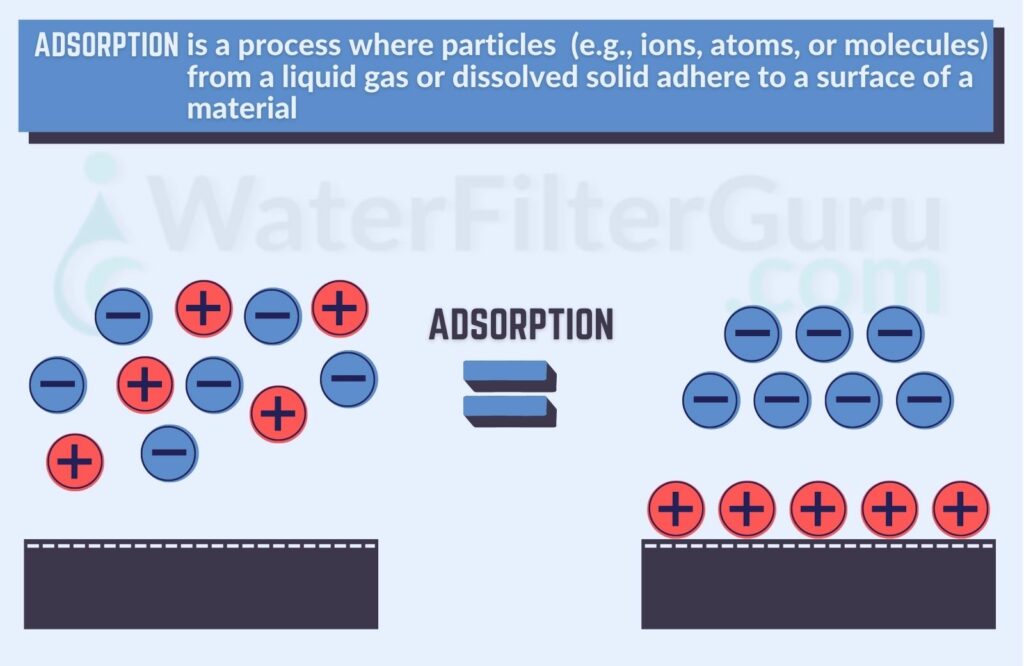
👉 There’s a lot more to the activated carbon filtration process, so if you’re interested to learn the science behind this system, click here.
🔎 How Do Carbon Block Filters Work?
Carbon block filters are a type of activated carbon filter. They’re made by compressed, solid carbon block, giving them a large surface area that enables drinking water to have a longer contact time with the filter, allowing the media to trap a broad range of contaminants of different sizes.
It’s typical for a carbon block filter to have pore sizes of between 0.5 microns and 10 microns, with the average size being 1-5 microns. The smaller the pore size, the greater number of contaminants can be removed – but the faster the media will get clogged by these contaminants during water filtration.
Curious to learn more about micron ratings? Check out this post
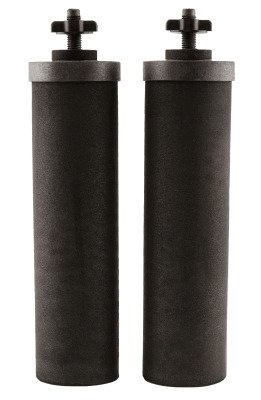
🆚 What’s the Difference Between Solid Carbon Block vs GAC Filters?
GAC (granular activated carbon) filters are made up of loose carbon granules. This typically gives them a smaller surface area than solid carbon block filters, making them slightly less effective at removing contaminants, as water has a shorter contact time with the filter media.
However, the shorter contact time with a granular activated carbon filter can be an advantage in certain filtration applications, such as gravity filters, which don’t rely on the force of water pressure to send drinking water through the filter at a fast rate.
Granular activated carbon (GAC) filters are also highly porous, and, unlike carbon block filters, they’re not limited when it comes to pore size.
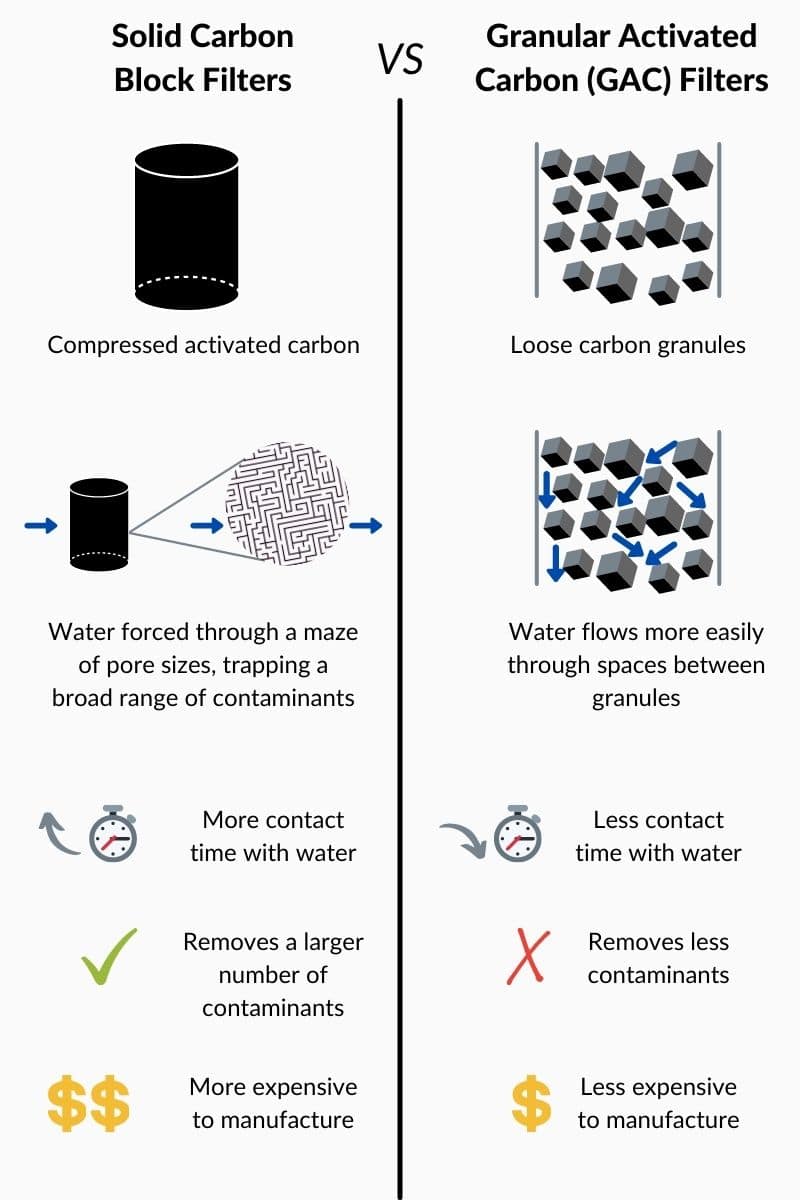
🚰 How Are Carbon Block Water Filters Made?
There are two common processes used to make carbon block filters: compression and extrusion molding.
Compression Molding
In compression molding, a mixture of polymeric binder and carbon is poured into separate molds and subjected to heat and pressure, keeping the temperature lower than the polymeric binder’s melting point. This process, known as sintering, is continued until the material compresses and hardens.
The carbon and binder mesh sizes can be varied, which allows for the production of varying pore sizes within the carbon blocks (remember, they’re available in micron sizes from 0.1 to 20). Once the material has cooled, the blocks can be cut down to size before they’re installed inside filter cartridges.
Extrusion Molding
The extrusion processes introduces the same mixture of polymeric binder and carbon to a continuous porous carbon block. The difference in this process is that the block is twisted and melted to form a tubular shape. Once cooled, the blocks are cut to size and installed into activated carbon filtering cartridges.
Which Process is Best?
Both methods are used widely by manufacturers, and there are positives and negatives of both.
Compression molding tends to involve the highest level of labor and has a slower production rate, but it allows manufacturers to choose between a wider variety of binder materials, which can enable an overall improvement in adsorption performance.
Extrusion is lower in cost and is less labor-intensive, making it a good option for quickly and cheaply restocking inventory.
🧐 What Raw Materials are Carbon Block Filters Made From?
There are many different types of raw materials that can now be used in the production of activated carbon block filters. You’re most likely to see wood, bituminous coal, and coconut listed as a raw material in manufacturing the most popular filters used today.
Carbon filters that use wood benefit from low-cost sourcing, which can help to keep production costs down. Wood is a renewable resource, which is another benefit, but trees need to mature to be used for this purpose – and that can take years.
Bituminous coal, or bituminous-based coal, is widely available and one of the most affordable materials, making it a popular choice. It does have its disadvantages, however – carbon filters made from coal may get contaminated by certain pollutants.
The most popular option we’re seeing at the moment is the coconut shell activated carbon filter – and there’s a good reason for this. Coconut shell carbon filters typically have smaller micropores, and a larger volume of these pores, which gives a larger surface area. This enables the system to work more efficiently to trap contaminants, including the smaller, “difficult” organic molecules like VOCs.
Coconut shell carbon is typically the easiest choice for manufacturers, too, with it being the purest option of all the carbon sources (it contains very little organic ash). Because of this, a coconut carbon block filter tends to be more consistent in its performance. As an extra bonus, coconut shell carbon is a renewable material, making it an eco-friendly option.
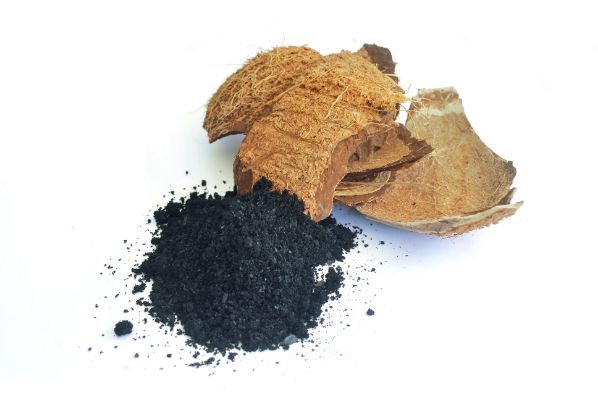
🧫 What Contaminants Can Carbon Block Filters Remove?
Solid carbon block filters, as I mentioned earlier, tend to be more effective than granular activated carbon (GAC) filters when it comes to removing contaminants.
A solid carbon block cartridge is typically capable of removing heavy metals, volatile organic compounds, chemicals, and particles that may affect the taste and odor of drinking water.
Some of the heavy metals you can use carbon filters to remove include lead and arsenic. Volatile organic compounds that may be reduced or removed from drinking water include dichloromethane and trichloroethylene.
Chlorine is one of the chemical particles that are most effectively filtered during this form of water treatment. Some water carbon filters are even capable of bacteria removal in drinking water, although this is certainly not a given with these types of clean water systems.
The exact contaminants removed when you use carbon water systems depends on the micron size of the pores in the system you’re using. Cartridges with a smaller micron size will have a better performance when it comes to adsorption of smaller particles like bacteria, but most systems will have a micron pore size that makes them best suited to the reduction or removal of chlorine, taste & odor.
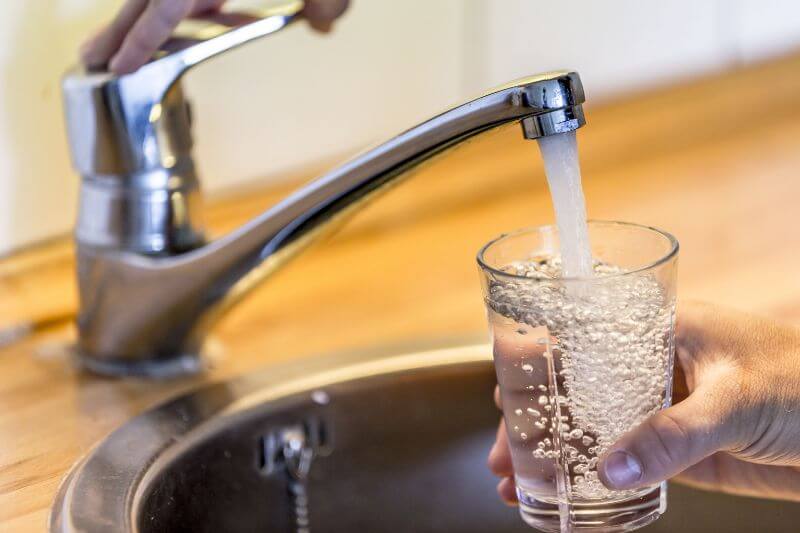
📋 Important Features of a Quality Solid Block Water Filter
When you’re on the lookout for a carbon block filter, make sure to consider the following features:
Capacity
An activated carbon block’s filter capacity is how many liters or gallons of water it can treat before it needs replacing. The design of this type of system means that it’ll inevitably become too clogged with particles to be of any use after so much filtration.
A filter’s capacity depends on the raw materials used to produce it (typically, coconut shell carbon has the highest capacity) and the quality of the filter overall.
Manufacturers will usually convert a filter’s capacity to a time period, e.g up to 3,000 gallons or 12 months.
This makes it easy to compare the value of one filter to the next, but keep in mind that the exact lifespan of your filter will depend on the quality of your drinking water (more contaminants = a faster rate of clogging) and how often you use the filer (the more frequently the system is used, the faster you’ll wear it out).
Flow Rate
The flow rate of a solid carbon block filtering system is a measurement of how many gallons of drinking water it can handle per minute. Flow rate is important for obvious reasons – you don’t want to wait for hours for water to pass through your system for drinking.
The type of activated carbon filter system you go for will largely determine your filter’s flow rate.
For instance, solid carbon block water filters that are installed in a pitcher, which relies on the force of gravity to send water through the filter, will inevitably be slower than carbon block filters in under-sink units, which have the benefit of water pressure to force water at a rate through the filter.
However, a high flow rate tends to result in less effective filtration as there’s less time for adsorption to take place, as I mention in more detail below.
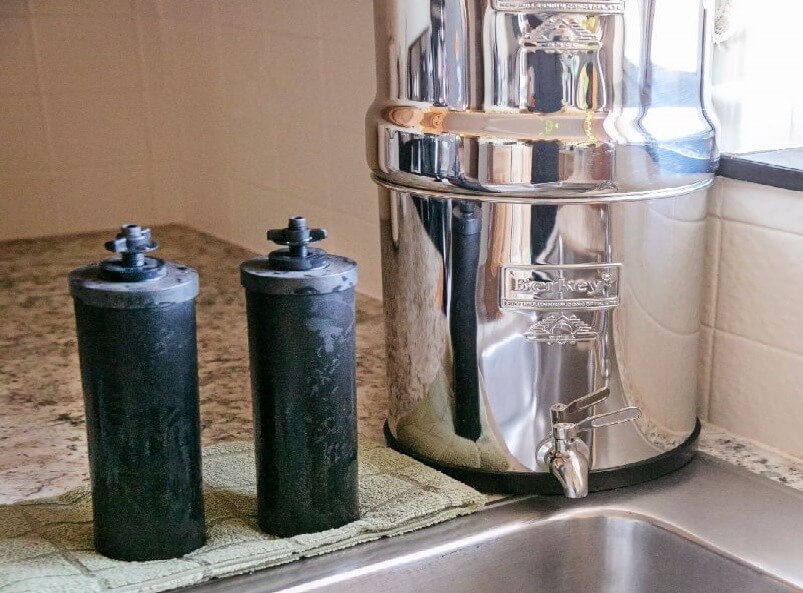
Operating Pressure
A very handy feature of activated carbon water filters is that they don’t require any energy or water pressure to operate. That means you can use this type of filter cartridge in applications that rely on gravity for filtration, like some countertop drinking water filters and pitcher filters.
Water pressure can still affect a solid carbon block filter’s performance, however. The lower the pressure, and the slower the flow rate, the more thoroughly this water treatment solution can work to remove contaminants. If your water pressure is too high, you may end up forcing water through the filtering cartridge so quickly that adsorption doesn’t have time to properly take place, resulting in some impurities remaining in water.
Most filtering applications will have a maximum water pressure to work properly. For instance, if you’re using a solid carbon block media in a reverse osmosis water treatment system, your water pressure shouldn’t exceed 100 PSI. You can install a pressure regulator if your water pressure is higher than this (which is highly unlikely – the average water pressure is between 50 and 70 PSI.
NSF/ANSI Standard 42 and 53 Certification
If you want to know that an activated carbon filter can live up to its manufacturers’ claims, check for an NSF/ANSI certification.
The American National Standards Institute, known as ANSI for short, and NSF International are third-party testing bodies that work independently to determine whether a filter is capable of reducing contaminants to below the Environmental Protection Agency’s maximum contaminant level (MCL).
Carbon block filters are tested for Standards 42 and 53. Being certified to Standard 42 offers proof that filter systems can effectively remove chlorine (including aesthetic contaminants alongside chlorine that affect taste and odor) to below the MCL, while a Standard 53 certification demonstrates that filters can remove dissolved contaminants that pose a health risk, such as lead.
Manufacturing companies must pay for an NSF certification, but it gives companies an edge over their competitors to show that their products are third-party tested and certified by this well-known body, so it’s worth thinking twice about a product if it doesn’t have this certification.
There’s a safety element to having an NSF certification, too, with NSF International also checking that a filter’s components won’t leach harmful contaminants into the water, that the product’s labeling is accurate, and that manufacturing is consistent, during testing.
